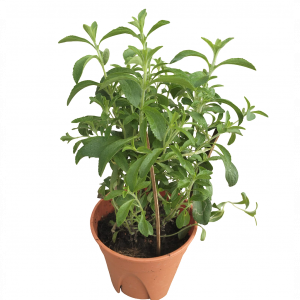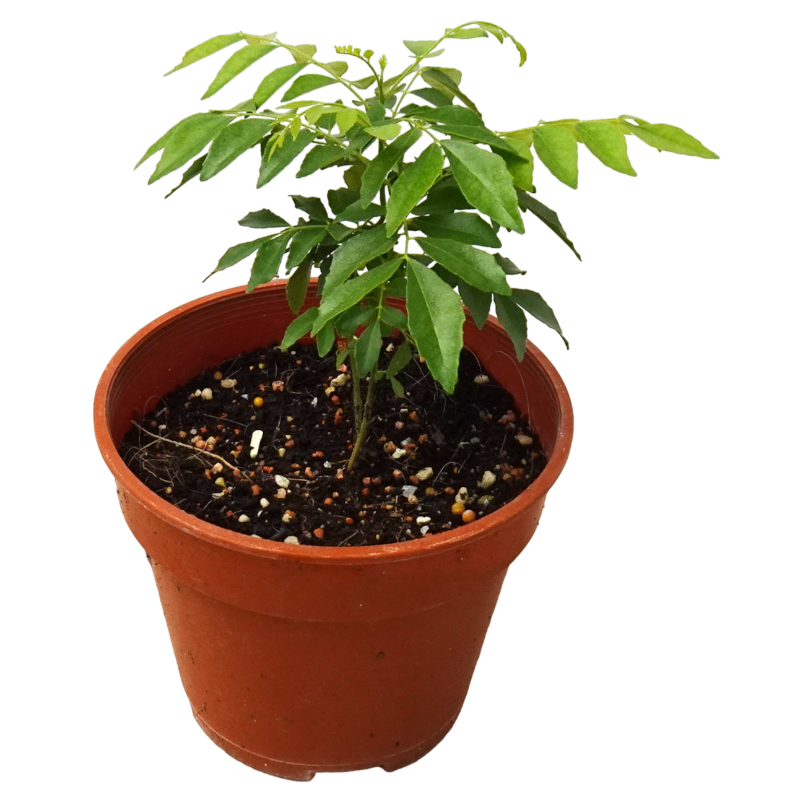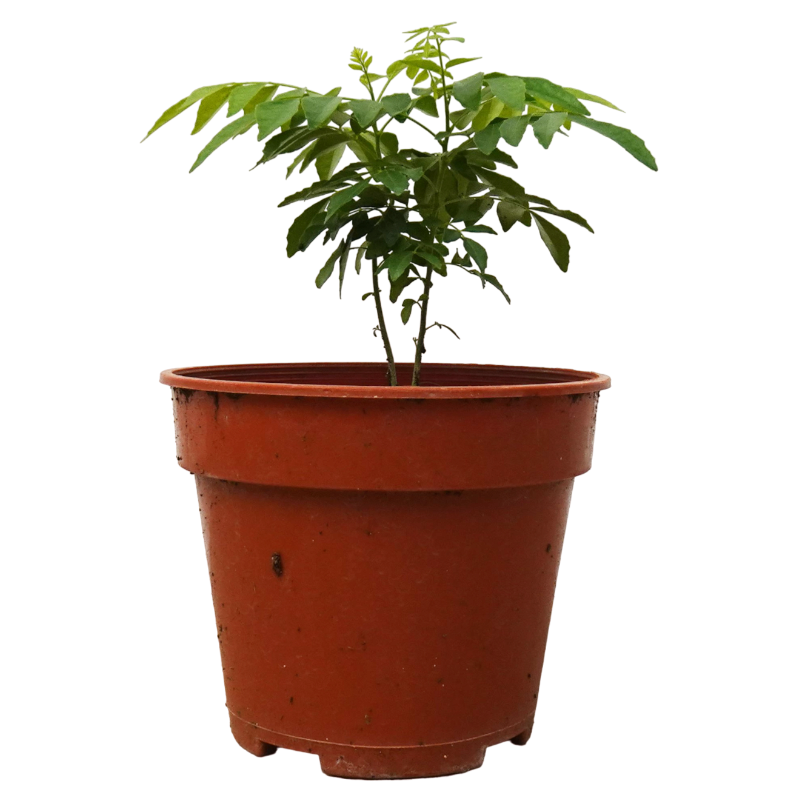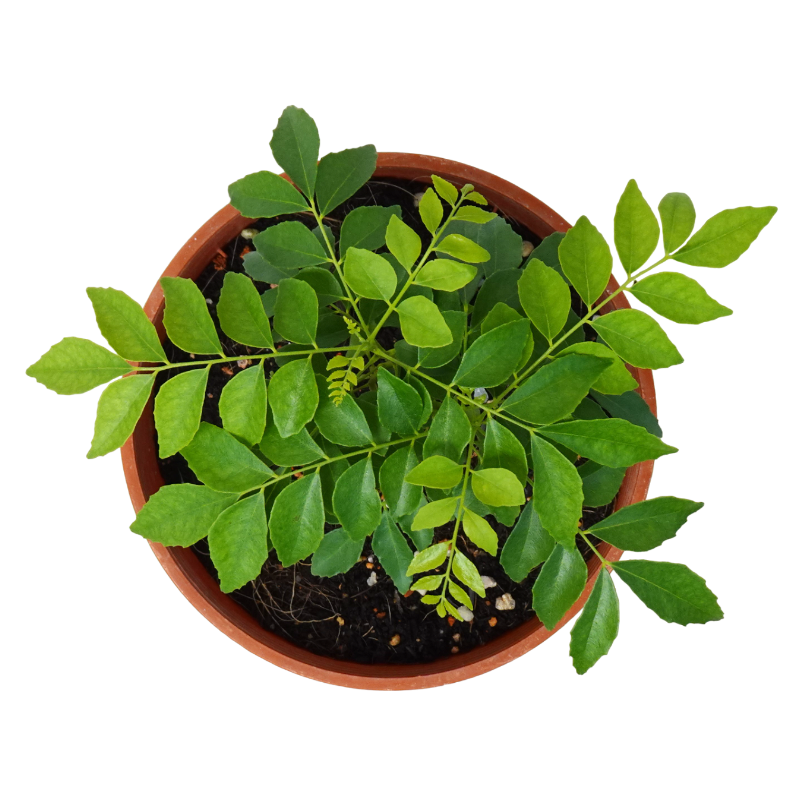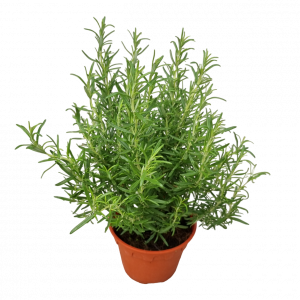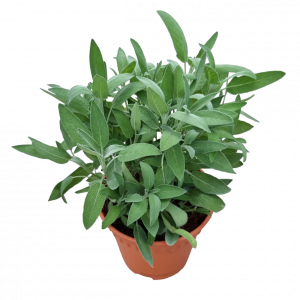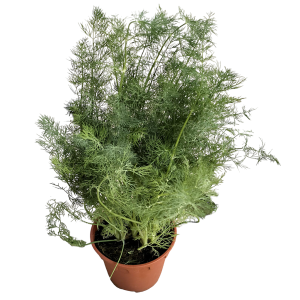Murraya koenigii, commonly known as the Curry Leaf Tree, is a tropical shrub native to India and Sri Lanka, celebrated for its aromatic, pinnate leaves that are a key ingredient in many South Asian cuisines. The plant produces small, fragrant white flowers that develop into dark purple-black berries. Its leaves are prized not only for their distinct flavour but also for their medicinal properties, making it a sought-after herb in both kitchens and traditional medicine cabinets. As a hardy, fast-growing plant, the Curry Leaf Tree is perfect for gardens and containers, offering both ornamental beauty and culinary benefits.
Light Requirements: The Curry Leaf Tree thrives in full sun, where it can receive at least 6 hours of direct sunlight each day. While it can tolerate partial shade, the plant will grow more vigorously and produce more leaves in bright light. Avoid placing the tree in areas with low light conditions, as this can result in slow growth and sparse foliage.
Watering: Murraya koenigii prefers well-drained soil that remains consistently moist but not waterlogged. Water the plant when the top 2-3 centimetres of soil feel dry. It’s essential to ensure proper drainage, as stagnant water around the roots can lead to root rot.
Soil Conditions: The Curry Leaf Tree grows best in fertile, well-draining soil. A rich, loamy soil mixed with compost or organic matter will provide the nutrients needed for healthy growth. While the plant can tolerate a range of soils, it’s important that the soil does not retain excessive moisture, as this can cause root rot.
Fertilising: Fertilise the Curry Leaf Tree with a balanced, water-soluble fertiliser to encourage strong, healthy growth and a plentiful harvest of aromatic leaves. Organic fertilisers, such as compost or well-rotted manure, can also be used to enrich the soil and support long-term plant health. Avoid over-fertilising, as this may stress the plant or result in excessive leaf growth at the expense of flavour.
Pests: The Curry Leaf Tree is generally pest-resistant but may occasionally attract aphids, scale insects, or whiteflies. Regularly check the undersides of the leaves for signs of pests. If infestations occur, treat the plant with insecticidal soap or neem oil to control the problem. Ensuring good air circulation around the plant can help prevent pest problems, as well as reduce the risk of fungal infections.
General Care: Murraya koenigii is a relatively low-maintenance plant, but it requires attention to ensure it remains healthy and productive. Ensure the plant receives plenty of direct sunlight, water regularly without over-saturating the soil, and provide a nutrient-rich, well-draining growing medium. Prune the plant occasionally to encourage new growth and maintain a manageable size, especially when growing in containers. With proper care, your Curry Leaf Tree will thrive, offering aromatic leaves for cooking and an attractive addition to your garden or home.
Lighting: Full Sun
Watering: Water Moderately
Watering Frequency: Daily
Scale insects: Scale insects are small, immobile pests that infest plants by feeding on their sap. They can cause yellowing, stunted growth, and plant death. There are two main types of scale insects: armored scales and soft scales. Control methods include cultural practices such as pruning and improving plant health, as well as insecticides that are specifically labeled for use against scale insects..
BIO-PLUS NPK 8-8-8-10+TE Organic Fertiliser: Every 2 Weeks.

